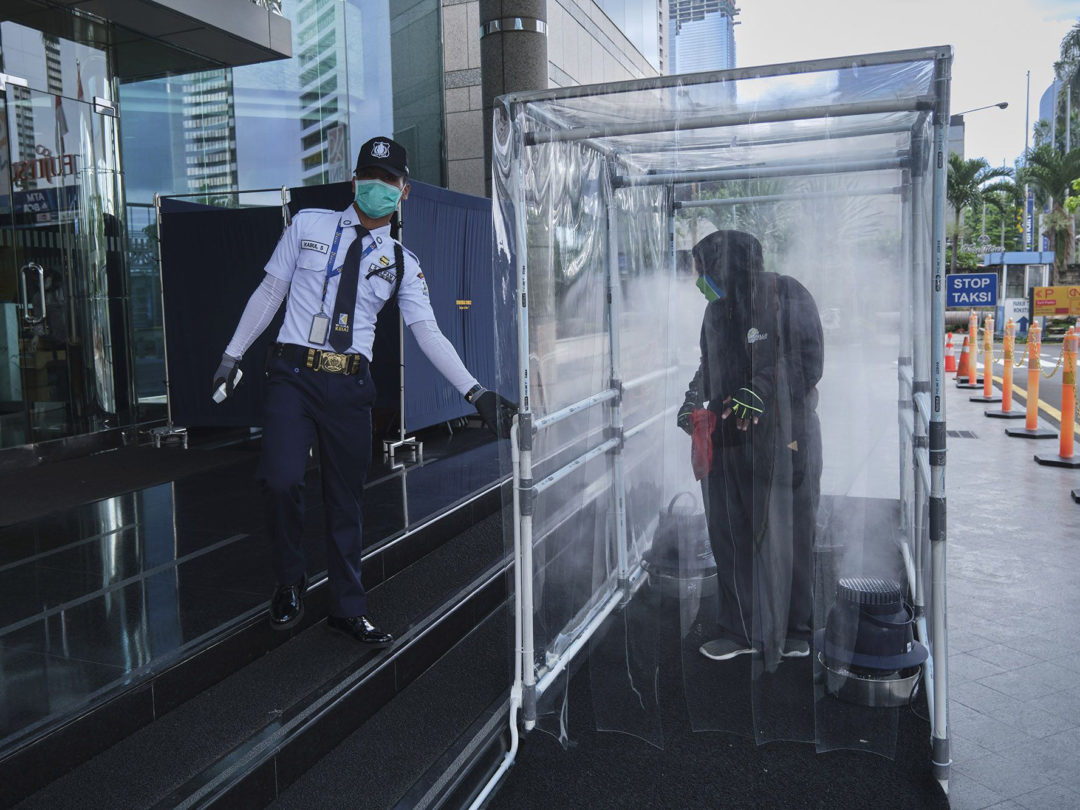
The coronavirus pandemic will disappear much faster than the economic crisis that it caused.
The most pessimistic predictions say it could be five years before the slumping economy returns to the level of activity it was enjoying when COVID-19 emerged. Others hope for a “V’-shaped recovery — a sharp plunge followed quickly by an equally extreme bounce. (Not, one hopes, that of the proverbial dead cat.)
Either way, there are multiple storms to be withstood before the economy can be said to have returned to “normal.” Steven Minsky, CEO of risk-management software provider LogicManager, lays out five major risks that companies need to tackle as they ride out the recession.
1. Disruption due to social distancing. Many of those who still have jobs are able to do them from home, or in similarly sequestered environments. But many others aren’t. In the rush to shelter in place, Minsky says, companies haven’t redefined the nature of work, to determine where and whether specific jobs can be carried out. In some cases, they might discover that a responsibility that appeared to require personal contact can in fact be relocated to enable social distancing. Those who were accustomed to social gatherings are finding video chat platforms to be acceptable substitutes, at least for now. And businesses that have previously insisted on bring their executives together in one room are turning to digital conferences that are equally effective.
“It’s not a transition,” says Minsky. “It’s a transformation.” Making the change requires a rethinking of every aspect of a business conference, including settling on the right communications technology and discovering new revenue streams that might arise from it.
When it comes to dealing with customers at the retail level, an automated inventory control system covering multiple stores can sometimes provide a better experience than a physical interaction at a single brick-and-mortar location. At the very least, shoppers should be given the option. “It’s a great opportunity to position yourself for post-COVID-19 days,” says Minsky.
2. Plummeting employee productivity. Most organizations that have transitioned to a work-from—home setup haven’t actually transformed their operations, Minsky argues. As a result, they can no longer identify and assist employees who aren’t meeting productivity targets. “Forty percent of the workforce just can’t function,” he says. “They don’t have the skillset to do that anymore.”
Virtual organizations need to employ digital dashboards that break down work into all of its components. Recruiting, for example, requires the participation of multiple individuals and key steps that have yet to be fully digitized. To avoid the risk of hiring the wrong person, companies need checklists that clarify the responsible of each staff member in the recruitment process, with clear guidance on what they’re looking for in a candidate.
3. Stressed supply chains. The old way of reacting to a disaster in one part of the world — say, flooding in Thailand or a tsunami in Japan — was to shift sourcing to another region. (For manufacturers that had been relying on a single country for the bulk of their product, that was a hard-won lesson.) But what happens when the disaster in question strikes all regions simultaneously? That’s what has occurred with the coronavirus pandemic, with no part of the global supply chain being considered safe.
Nevertheless, says Minsky, manufacturers need to become more agile in their ability to adjust to any kind of disruption. In some cases, that might require switching to an entirely different product, as in the case of automakers suddenly turning out respirators for those suffering from COVID-19. Again, Minsky argues for a risk-based approach to designing — actually, redesigning — global supply chains.
4. Recession, unemployment and investment pullback. External developments of this kind are impossible to dodge, but Minsky urges companies to find opportunity in a crisis. With unemployment soaring, they have an unprecedented chance to redefine jobs and skills for a better fit with the organization. Before, he says, “people didn’t want to be retooled, and investors didn’t want to invest in it. Now, retooling seems like a pretty good investment.” Innovation turns out to offer the less risky approach.
5. Economic instability and civil unrest. Again, external occurrences that are beyond the control of companies to prevent. And the problem is of global scope. Ironically, the internet, which brought to the world an infinite wealth of knowledge and a platform for cooperating across borders, is the cause of this divisiveness, Minsky says. “It allowed for the reshifting of extreme viewpoints to get together.”
Companies today need a clear-eyed view for anticipating and coping with unrest globally. They can’t wait for things to blow up, and for supply chains to become massively disrupted. “Risk management is about imagining the unimaginable,” Minsky says. It involves careful planning, including the formation of “what-if” scenarios in response to any number of possible predicaments.
As the world struggles to beat the pandemic and get economies back on track, companies should be acting now to identify the risks in their supply chains, and ways to mitigate their impact. “Let’s get busy now,” says Minsky. “Don’t think of this year as something you need to wait out — it’s something you need to actively engage on.”







